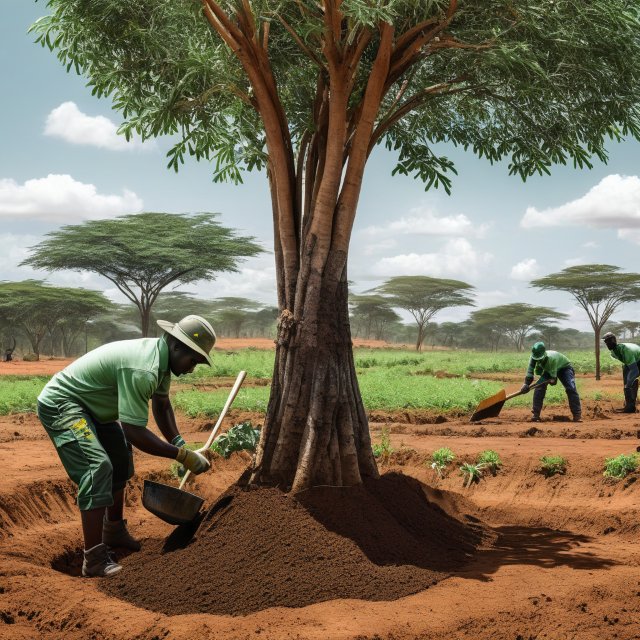Tree Planting Exercise in Africa
Tree planting exercises have become a vital initiative in Africa, aimed at combating the devastating effects of deforestation and environmental degradation. The continent, which is home to some of the world's most diverse and vibrant ecosystems, has faced significant challenges in recent years, including soil erosion, desertification, and loss of biodiversity.

Tree planting efforts have been undertaken by governments, NGOs, and local communities to restore degraded lands, promote sustainable livelihoods, and mitigate the impacts of climate change. In many African countries, tree planting has become an annual event, with millions of trees planted each year.
For example, in Ethiopia, the government has launched a national tree planting campaign, aiming to plant 20 billion trees by 2025. Similarly, in Kenya, the Green Belt Movement, founded by Wangari Maathai, has empowered local communities to take charge of their environment by planting millions of trees. Tree planting exercises in Africa have numerous benefits, including soil conservation, improved air and water quality, and enhanced biodiversity.
Trees also provide shade, food, and livelihoods for local communities, supporting economic development and poverty reduction. Moreover, tree planting helps to sequester carbon dioxide, contributing to global efforts to combat climate change. Despite the progress made, tree planting exercises in Africa face several challenges, including limited resources, inadequate infrastructure, and conflicting land uses. In some cases, tree planting efforts have been met with resistance from local communities, who may view them as a threat to their traditional livelihoods or cultural practices.
To address these challenges, it is essential to adopt a participatory and inclusive approach to tree planting, involving local communities in the planning, implementation, and management of tree planting initiatives. This can help to build trust, ensure community ownership, and promote sustainable livelihoods. In addition, tree planting exercises in Africa must be integrated with other environmental conservation efforts, such as wildlife conservation, water management, and sustainable agriculture.
This can help to create a holistic approach to environmental management, promoting ecosystem services and human well-being. In conclusion, tree planting exercises in Africa are a critical step towards environmental sustainability, economic development, and human well-being. While challenges remain, the benefits of tree planting far outweigh the costs, and with collective effort and commitment, Africa can restore its degraded lands, promote sustainable livelihoods, and contribute to global environmental conservation.













